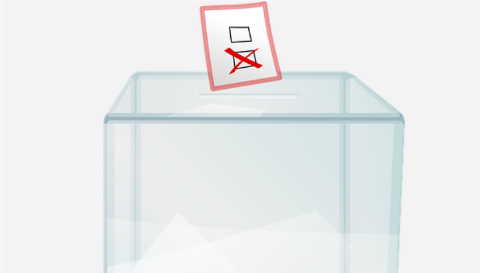By the time I sat down to watch Channel 4’s latest Dispatches documentary, the twist had already been spoiled for me. I knew from the get-go that the woman presenting the show wasn’t real. Instead, she was AI dressed in a smart suit with a pitch-perfect British television accent – serious, soft and southern.
UK broadcaster Channel 4 claims its use of an AI presenter was a first in TV history. (Russian state media may have a prior claim.) I’m not sure it’s an experiment worth repeating. The deepfake technology used in the documentary generated a highly believable television presenter, who would have been entirely forgettable if it had not been for the novelty of the stunt.
That’s not just me being defensive; the presenter herself acknowledged her own limitations on screen. She’s not on location to interact with any of the documentary’s subjects, she points out. She’s not able to conduct searching interviews or reach any Louis Theroux-style conclusions about what’s taking place. At most points, she’s little more than a voiceover.
Her limitations reflect those of the wider experiment that took place in this episode of Dispatches, titled Will AI Take My Job? It saw four professionals – a doctor, a lawyer, a photographer and a composer – pitted against an AI rival in their line of work.
Perhaps predictably, given the current stage of AI development, the challenges doled out to the workers and their AI counterparts were fairly one-dimensional tasks that represented a specific element of their job, rather than being a true expression of the multifaceted nature of their work.
Only the photographer, who was tasked with a fashion photo shoot, “lost” the challenge – although it should be noted that her AI “rival” was in fact a piece of software operated and directed by two people who were making a steady stream of creative decisions.
Even when AI performed well, with ChatGPT reaching some diagnoses similar to those of the doctor, it’s clear that its capabilities are ultimately limited. It could not, for example, examine the foot of the woman with plantar fasciitis to determine how much pain she was in and therefore what level of intervention might be appropriate.
Similarly, an AI presenter might be a suitable stand-in if you were making a one-note educational or instructional video, but it wouldn’t be able to fulfill all of the duties of journalists who usually make documentaries. These include finding human case studies, persuading them to take part, making them feel comfortable enough to open up on camera and crafting what you find out from them into a compelling and cohesive narrative. (Channel 4 has said it doesn’t plan to make a habit of using an AI presenter.)
Still, the Dispatches documentary did capture where we are with AI in the here and now. The professionals involved experienced the kind of discomfort and soul-searching that any of us might feel if we were confronted with a deepfake version of ourselves who challenged our money-making skill set or craft.
AI and the future of jobs
Perhaps the biggest failing of the documentary was that while it raised pertinent questions about AI, it then left them hanging without attempting answers.
In the final five minutes of the show, Adam Cantwell-Corn, policy lead for the Trade Unions Congress Tech Project, and economist Daniel Susskind point out that a robust social security system is going to be necessary to deal with the unemployment caused by AI – a challenge for which no government is currently prepared.
The British government’s response was to say: “We’re determined people have the tools they need to take advantage of [AI], which is why we’re working with leading tech firms to train a fifth of our workforce in AI over the coming years.”
The documentary then immediately segued into dropping the bomb about the AI presenter before ending abruptly. It didn’t challenge the government’s statement – a missed opportunity.
Pinning the solution to potential AI-induced mass unemployment – polls show it’s something people are very worried about – on the hopes that tech companies will upskill us all in AI feels like asking the zombies to protect us during the apocalypse. It’s naive at best, suicidal at worst.
Tech companies have shown us time and again that they will prioritize profits over people. They don’t even care about their own people, who they call family one day, then lay off with breathtakingly little compassion and respect the next. Governments would be delusional to think tech companies care one iota about the employment status of their citizens.
One surefire way for tech companies to maximize profits is by minimizing headcount, both for themselves and their clients. If we were to be really cynical, we might assume mass unemployment is not just an unfortunate consequence of Big Tech’s pursuit of AI superintelligence, but their ultimate goal.
Perhaps it feels less scary for governments to toss this hot potato back at the tech companies than to grapple with it themselves. Because when faced with the reality that successive political administrations have been dismantling our social safety net piece by piece, the idea of rebuilding it probably seems unappealing, intimidating and maybe even completely insurmountable.
Maybe it wouldn’t occur to an AI journalist to point this out. But to this flesh-and-blood journalist, why our governments aren’t preparing to help us navigate what could be an unemployment crisis feels like the million-dollar question for which every worker everywhere deserves a proper answer.






